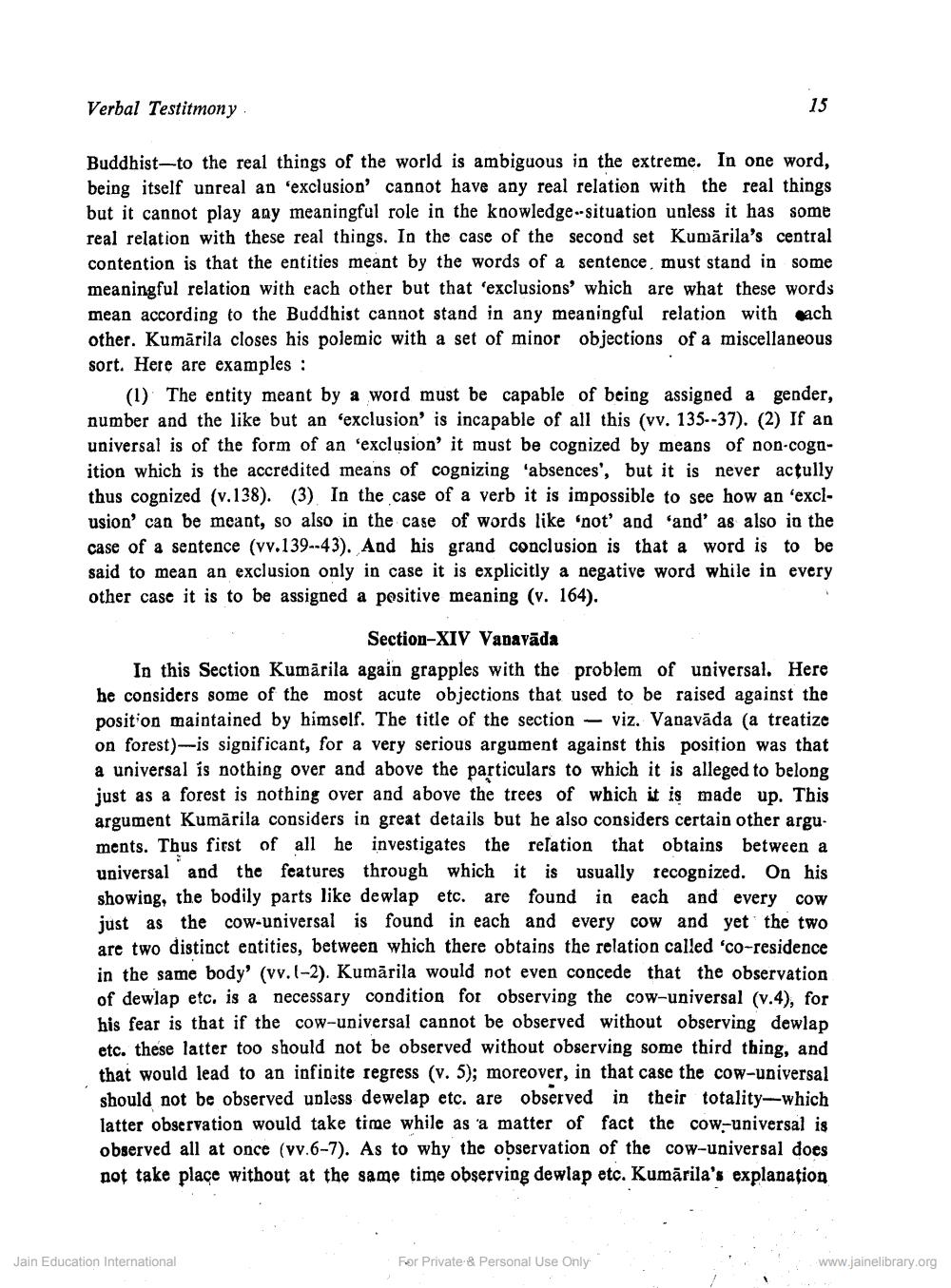________________
Verbal Testitmony
Buddhist-to the real things of the world is ambiguous in the extreme. In one word, being itself unreal an 'exclusion cannot have any real relation with the real things but it cannot play any meaningful role in the knowledge--situation unless it has some real relation with these real things. In the case of the second set Kumārila's central contention is that the entities meant by the words of a sentence, must stand in some meaningful relation with each other but that 'exclusions which are what these words mean according to the Buddhist cannot stand in any meaningful relation with each other. Kumārila closes his polemic with a set of minor objections of a miscellaneous sort. Here are examples:
(1) The entity meant by a word must be capable of being assigned a gender, number and the like but an "exclusion' is incapable of all this (vv. 135.-37). (2) If an universal is of the form of an 'exclusion' it must be cognized by means of non-cognition which is the accredited means of cognizing 'absences', but it is never actully thus cognized (v.138). (3) In the case of a verb it is impossible to see how an 'exclusion' can be meant, so also in the case of words like 'not' and 'and' as also in the case of a sentence (vv.139--43). And his grand conclusion is that a word is to be said to mean an exclusion only in case it is explicitly a negative word while in every other case it is to be assigned a positive meaning (v. 164).
Section-XIV Vanavāda In this Section Kumārila again grapples with the problem of universal. Here be considers some of the most acute objections that used to be raised against the position maintained by himself. The title of the section – viz. Vanavāda (a treatize on forest)-is significant, for a very serious argument against this position was that a universal is nothing over and above the particulars to which it is alleged to belong just as a forest is nothing over and above the trees of which it is made up. This argument Kumārila considers in great details but he also considers certain other arguments. Thus first of all he investigates the relation that obtains between a universal and the features through which it is usually recognized. On his showing, the bodily parts like dewlap etc. are found in each and every cow just as the cow-universal is found in each and every cow and yet the two are two distinct entities, between which there obtains the relation called 'co-residence in the same body' (vv.(-2). Kumārila would not even concede that the observation of dewlap etc. is a necessary condition fot observing the cow-universal (v.4), for his fear is that if the cow-universal cannot be observed without observing dewlap etc. these latter too should not be observed without observing some third thing, and that would lead to an infinite regress (v. 5); moreover, in that case the cow-universal should not be observed unless dewelap etc. are observed in their totality--which latter observation would take time while as a matter of fact the cow-universal is observed all at once (vv.6-7). As to why the observation of the cow-universal does not take place without at the same time observing dewlap etc. Kumārila's explanation
Jain Education International
For Private- & Personal Use Only
www.jainelibrary.org




